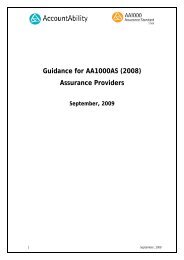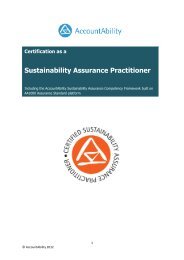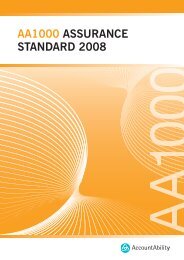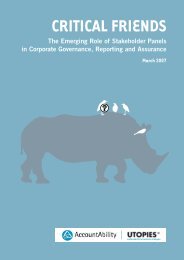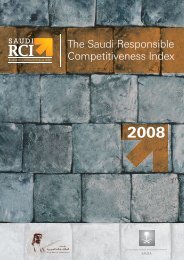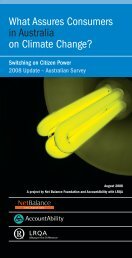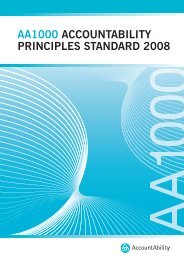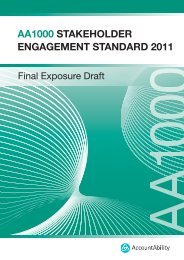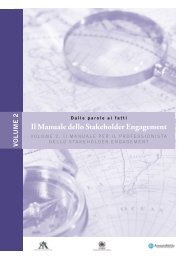The Stakeholder Engagement Manual Volume 2 - AccountAbility
The Stakeholder Engagement Manual Volume 2 - AccountAbility
The Stakeholder Engagement Manual Volume 2 - AccountAbility
Create successful ePaper yourself
Turn your PDF publications into a flip-book with our unique Google optimized e-Paper software.
Engage with your stakeholders in ways that work<br />
COMMON STAKEHOLDER ENGAGEMENT APPROACHES<br />
Some of the most common stakeholder engagement approaches are outlined below,<br />
followed by an introduction to some of the interactive techniques and methods that<br />
can be used in small and larger group meetings. Th e following engagement<br />
approaches are described:<br />
• Inviting written responses from stakeholders, e.g. via reply slips in reports<br />
• Telephone hotlines<br />
• One-to-one meetings<br />
• Online engagement mechanisms<br />
• Involvement of stakeholders into the investigation of issues, reporting and<br />
policy development<br />
• Focus groups<br />
• Public-meetings<br />
• Surveys<br />
• <strong>Stakeholder</strong> advisory or assurance panels<br />
• Multi-stakeholder forums<br />
• Multi-stakeholder alliances, partnerships, voluntary initiatives and joint-projects<br />
• Overview of common facilitation techniques<br />
Inviting Written Responses from <strong>Stakeholder</strong> / Reply Slips<br />
Invite written responses to formal consultations or ongoing response slips to enable<br />
stakeholders receiving issue briefi ngs or sustainability reports to provide feedback.<br />
Key things to consider<br />
Generally low response rates, but provides an open mechanism for individual<br />
stakeholders to easily have their say without having to attend meetings.<br />
Helps to build mailing list of interested stakeholders for further engagement.<br />
Does not generate statistically valid result – can easily be skewed.<br />
Examples in action<br />
Shell invites the general public to “Tell Shell” any questions, comments or opinions<br />
through tear off postcards in its sustainability report, letters or email. <strong>The</strong>y commit to<br />
reply personally to all comments or questions received in this way.<br />
Telephone Hotlines<br />
Freephone hotlines for individual stakeholders to obtain information about an issue or<br />
project, to give feedback or to report problems.<br />
Key things to consider<br />
Telephone communication is accessible to many people and enables individual<br />
stakeholders to respond with minimum effort and at a time and place convenient<br />
for them.<br />
Does not allow for in-depth dialogue, but does allow for stakeholders to obtain<br />
information or respond rapidly, and to do this in confi dence or anonymously<br />
if necessary.<br />
Telephone hotlines can be answered in-house by a corporate ombudsman,<br />
compliance offi cer, lawyer or trained administrator. In-house hotlines are able to<br />
respond to calls quickly and to give appropriate advice and feedback to callers.<br />
However, stakeholders may not feel comfortable reporting sensitive issues.<br />
Independent outsiders can handle hotline calls on behalf of an organisation.<br />
<strong>The</strong>y are less able to give feedback, but can be more credible and approachable to<br />
stakeholders, and can also be integrated into an assurance process.



